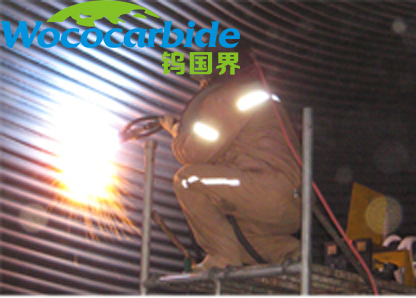

The flame propagation speed of gaseous fuel combustion refers to the speed at which the combustion flame front propagates in the direction of the unburned gaseous fuel in its normal direction. According to the theory of gas flame propagation, in order to maintain the stability of the flame, the speed of the flammable gas to the flame front should be kept equal to the flame propagation speed, otherwise there will be misfire or tempering.

1. Take off the fire
When the partial velocity of the combustible gas mixture along the normal direction at the combustion flame front is greater than the flame propagation velocity of the mixture, the flame will burn away from the nozzle and even be blown out. This phenomenon is called misfire. The flow velocity of the combustible gas mixture corresponding to the de-firing is called the de-firing limit.
2. Tempering
When the partial velocity of the combustible gas mixture along the normal direction at the combustion flame front is less than the flame propagation velocity of the mixture, the flame retracts inside the burner, a phenomenon called flashback. The flow velocity of the combustible gas mixture corresponding to the tempering is called the tempering limit. The possibility of flashback is proportional to the speed of flame propagation.
The flame can burn stably only when the flow rate of the combustible gas mixture is between the flashback limit and the defire limit. For flame spray equipment, the fire hazard is far less than that of backfire. Therefore, special attention should be paid to preventing the occurrence of tempering during the spraying operation. The main method to prevent tempering is to reduce the flame propagation speed or increase the gas injection speed. The specific measures are as follows.
(1) Under the condition of ensuring the flow rate of combustible gas, selecting the nozzle design with the number of holes, small aperture and deep nozzle can improve the ejection speed of the gas and the cooling effect of the nozzle, and reduce the propagation speed of the flame.
(2) Use gas with lower flame propagation speed.
(3) Cooling the nozzle can effectively prevent the rise of the initial temperature of the combustible gas and reduce the flame propagation speed.
(4) Ensure a higher air pressure in the nozzle and increase the gas ejection speed.
(5) Select the diffusion combustion method, so that the gas and the auxiliary gas are diffused and mixed outside the nozzle and burned, but the combustion intensity of this method is limited.
Hot information

